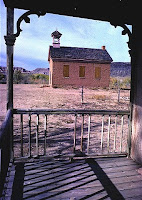Baby's First Steps
 Mid-City may the home of New Orleans' largest retail development.
Mid-City may the home of New Orleans' largest retail development.
A Georgia development company has been quietly working to assemble a vast swath of Mid-City, including the Lindy Boggs Medical Center, to create a nearly contiguous 20-acre site for 1.2 million square feet of retail space for national chains that until now have been unable to find a home inside the city.
The site being assembled by Victory Real Estate Investments LLC is huge, covering more than half a square mile from Jefferson Davis Parkway to Carrollton Avenue and from Toulouse to Bienville streets.
A second phase being discussed would involve an additional 9 acres on the lake side of North Carrollton, across the street from Sav-A-Center. Victory owns the Sav-A-Center and the former Winn-Dixie store that was converted into a small Home Depot last year.
The project has been well below the radar, with few city officials aware of it aside from Councilwoman Shelley Midura. Midura has been briefed on the project and is working closely with the Mid-City Neighborhood Organization, which has been playing a behind-the-scenes watchdog role on the development.
Many New Orleanean's have been reluctant to embrace national retail chains locating in the city because of the suburban nature of their developments and its incompatibility with the urban fabric of New Orleans.
But if the developers are willing to be flexible in their designs, they may be greeted with open arms.
"We don't want a suburban-style development plopped in the middle of an urban area," association member Janet Ward Pease said.
Jennifer Weishaupt, chairwoman of the association's newly formed economic development committee, said the association became aware of a potential Home Depot or Wal-Mart Supercenter proposed for the Bohn Ford vicinity in November 2005. In January 2006, it discovered the developer was Victory and expressed concerns over the project. It began meeting with Victory President Alton Darby and Vice President Kent Cost about their plans.She said the association was blunt in telling the executives this go-round that if they "even mention Wal-Mart," the group wasn't going to meet with them about the plans for the 20-acre parcel. The company then showed association members its plans and asked the association to keep the information confidential.
Victory has asked the association to develop a list of what neighbors must have in the development and other things they'd like to see, Weishaupt said. The group met Thursday to begin working on the list.
The importance of this development is that it may be a baby step toward the New Urbanism concept of cities being walkable. Although not truly walkable for everyone in Mid-City, it will be an immense improvement for residents now not to have to drive to neighboring parishes to do their shopping. With some forward thinking, this could spawn other, smaller retail developments scattered throughout the area along with schools, medical clinics and parks could be the genesis of the vision of what New Urbanists have been dreaming of.








